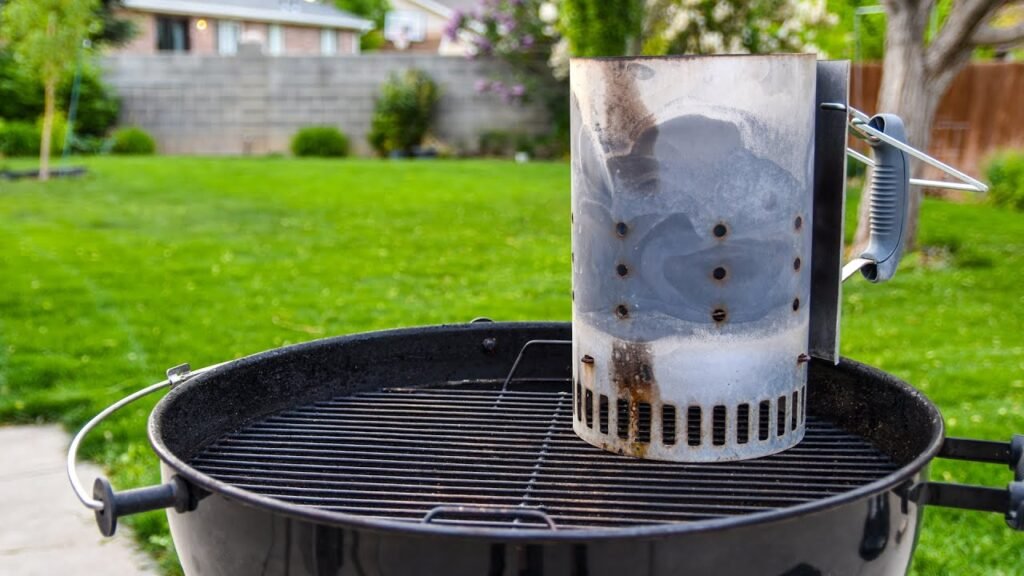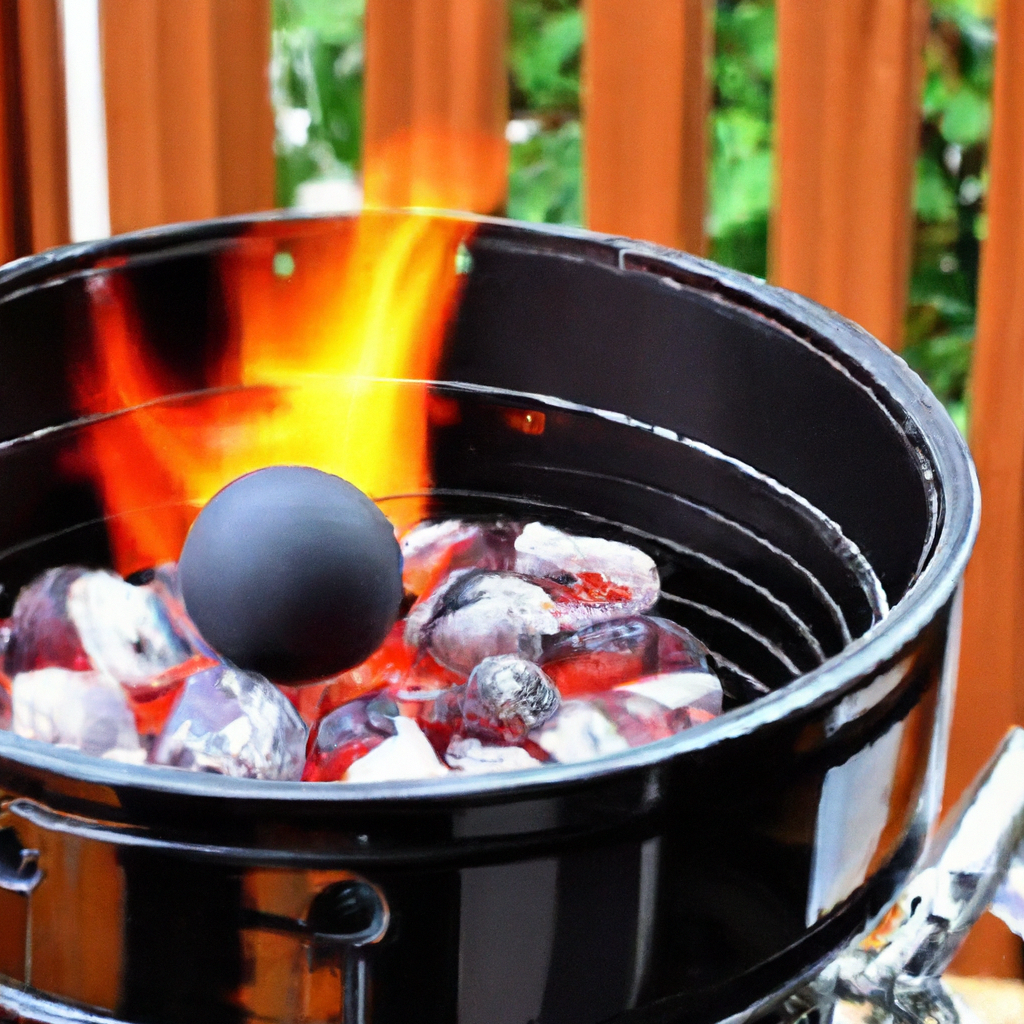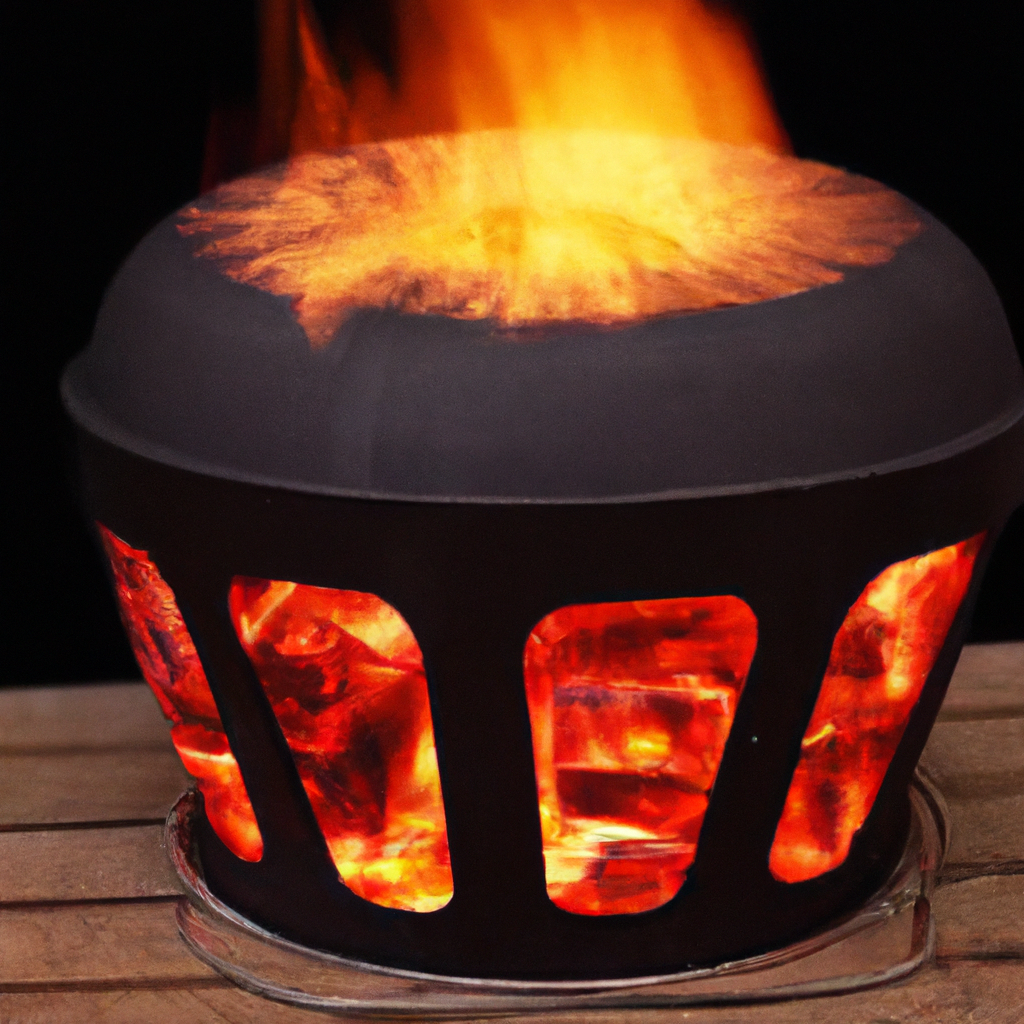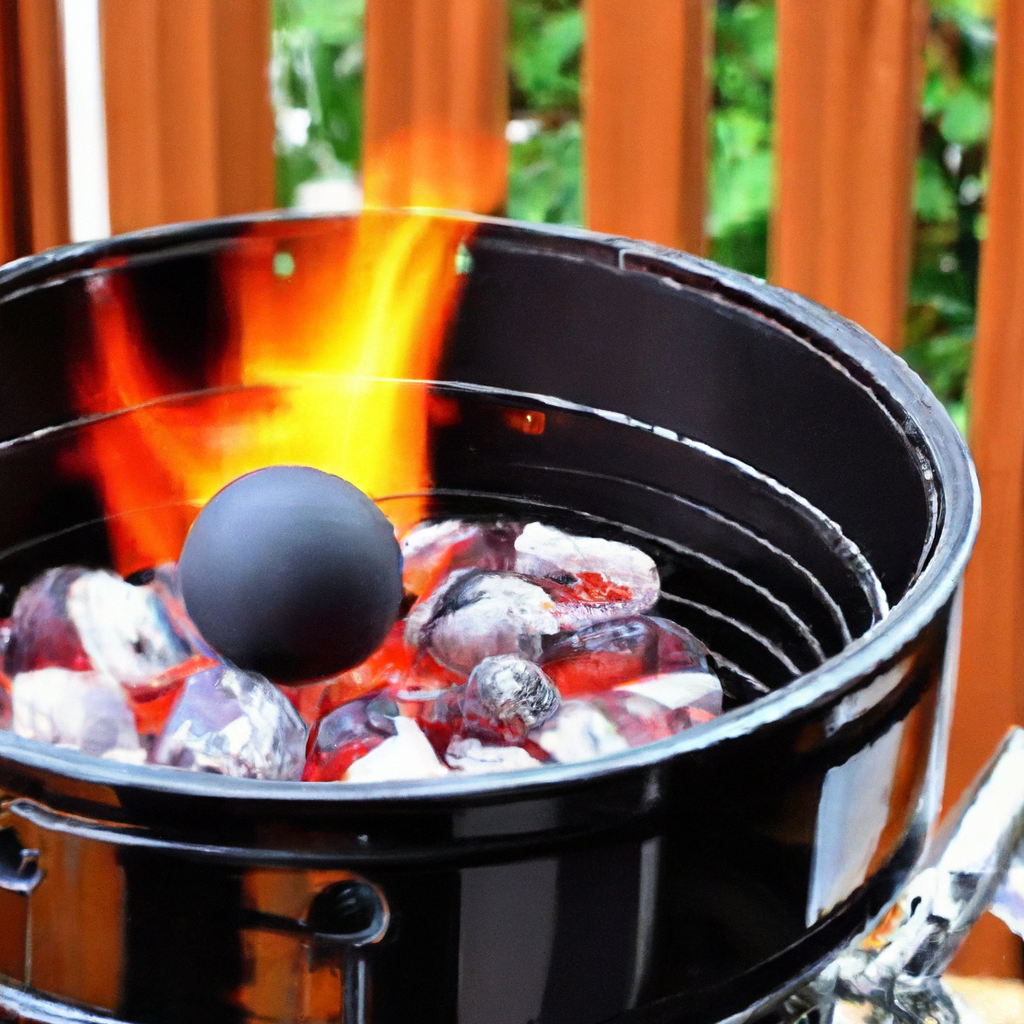When it comes to grilling, having a charcoal chimney starter is an absolute game-changer. These nifty devices can light charcoal twice as fast, making it easier to achieve consistent temperatures and results while grilling. If you’re new to grilling, figuring out when your charcoal is ready can be a bit of a challenge, but fear not! In this article, we will provide you with some handy tips on how much charcoal to light, how to gauge the readiness of the charcoal through the smoke it emits, and a few other tricks to make your grilling experience a breeze. You can easily purchase charcoal chimneys, as well as other necessary equipment like Weber cubes, tumbleweeds, and chimneys, at your local hardware store or online. So, let’s dive into the world of charcoal chimneys and discover the secrets to achieving amazing grilling results!
Using a charcoal chimney starter is a must-have in every charcoal grill enthusiast’s toolkit. In this article, we aim to show you some valuable tips and tricks to maximize the potential of your charcoal chimney starter. By lighting your charcoal through the chimney, you can enjoy the benefits of faster ignition and more consistent temperatures for your grilling. We’ll discuss how the amount of charcoal you light can affect the final temperature and offer some general guidelines to help you achieve your desired results. Additionally, we’ll share tips on reading the smoke emitted by the charcoal and using wood chips as indicators of readiness. Stay tuned for more insights on lighting your charcoal safely and effectively!
Tips for Using a Charcoal Chimney Starter
Grilling with charcoal can be a delightful experience, but getting the charcoal ready can sometimes be a challenge. That’s where a charcoal chimney starter comes in handy. It can light charcoal twice as fast and make it easier to achieve consistent temperatures and results when you grill. In this article, we will explore some helpful tips for using a charcoal chimney starter, from lighting the chimney to choosing the right charcoal and ensuring safety.
Lighting the Chimney
When using a charcoal chimney starter, it’s important to choose the right method for lighting it. One popular method is using a combustible material at the bottom of the chimney to ignite the charcoal. This could be Weber starter cubes, wax-covered tumbleweeds, or even DIY fire starters made from newspaper and oil. These materials are designed to light easily and provide a steady flame to ignite the charcoal.
However, it’s crucial to avoid direct contact between the chimney and cement or concrete surfaces. Cement surfaces may have water in the top layer, which can heat up and cause the layer to boil and pop off. This can not only start a fire but also damage your driveway or patio. To prevent this, always use a heat-resistant paver or place the chimney on the charcoal grate level in your kettle.
Choosing the Right Amount of Charcoal
The amount of charcoal you light in the chimney can greatly impact the final temperature when grilling. It’s essential to treat the amount of charcoal like a recipe, using the chimney as a measuring cup to help you out. Here are some general guidelines to follow:
- A quarter chimney of charcoal is suitable for low and slow cooking at around 225 degrees Fahrenheit.
- Half a chimney is ideal for temperatures of 275 or 300 degrees, suitable for various grilling techniques.
- A full chimney is recommended for roasting temperatures at 350 degrees or above, or for direct searing.
To fine-tune your grilling recipe, it’s helpful to keep track of the amount of charcoal you use, the type of charcoal, and the final temperature you achieve. This will eliminate guesswork and ensure consistent results in future grilling sessions.

This image is property of i.ytimg.com.
Using Wood Chips as an Indicator
Wood chips can serve as a helpful indicator to determine if the charcoal is fully lit and ready. Placing wood chips on top of the charcoal and observing their burning progress can provide valuable insights. If the wood chips haven’t burnt up yet, it means that the charcoal isn’t fully lit. This technique acts as training wheels for beginners, providing visual cues to determine the readiness of the charcoal. Over time, as you gain experience, you can stop relying on wood chips and rely on your observations.
Selecting the Right Fire Starters
Fire starters are essential for igniting the charcoal in a chimney starter. There are various fire starters available in the market, each with its own advantages. One popular choice is Weber starter cubes, which are designed specifically for grills. They are convenient and provide a reliable flame. Another option is wax-covered tumbleweeds, which are also effective in lighting the charcoal quickly. If you don’t have access to specific fire starters, you can create your own using newspaper and oil. Simply take some newspaper, preferably grocery store ads, and add a few drops of oil. This DIY fire starter will burn up well and help ignite the charcoal.

Ensuring Safety
When working with a charcoal chimney starter, it’s essential to prioritize safety. Avoid lighting the chimney directly on cement surfaces, as explained earlier. The presence of water in the top layer of cement can lead to dangerous situations, such as boiling and popping of the layer. To prevent accidents and damage, use a heat-resistant paver or place the chimney on the charcoal grate level in your kettle.
Reading the Smoke
Observing and understanding the smoke coming off the charcoal can provide valuable information about its readiness. Initially, the smoke will be thick and white. As the charcoal starts burning, the smoke will transition to gray, then blue, and eventually, there may be no visible smoke at all. Clear smoke is a significant indicator that the charcoal is fully lit and ready for grilling. It is crucial to wait for the ignition smoke to dissipate before placing the charcoal into the kettle. Rushing this step can result in off-flavors in your food. Plan for approximately 20 minutes to ensure correct timing.
Different types of charcoal may emit varying amounts of white smoke. Briquettes, for example, tend to produce more white smoke than lump charcoal or high-quality charcoal. However, this doesn’t mean you can’t achieve excellent barbecue results with briquettes. By waiting for the ignition smoke to die off, you can prevent any undesirable flavors.

Choosing the Right Charcoal
Selecting the right charcoal can greatly impact the taste and outcome of your grilling. Two common types of charcoal available are briquettes and lump charcoal. Briquettes often come in a white bag or a blue bag with a large K stamped on each briquette. They are readily available and widely used. While briquettes may produce more white smoke, they can still yield excellent results if you allow the ignition smoke to dissipate. Lump charcoal, on the other hand, is known for its high heat and pure flavor. It produces less ash and burns hotter, making it suitable for high-temperature grilling or searing.
To ensure optimal results, it’s important to wait for the ignition smoke to die off and wood chips to fully burn before introducing your charcoal into the kettle. This will guarantee that your charcoal is completely lit and ready for grilling.
Being Mindful of Footwear
Safety should always be a top priority when grilling with charcoal. Closed-toed shoes are important to protect your feet from any accidents or burns. When picking up the chimney or handling hot charcoal, there is a risk of dropping some charcoal, which could land on the ground. Stepping on hot charcoal or having it fall between your toes can cause severe burns. By wearing closed-toed shoes, you can prevent any such incidents and enjoy grilling with peace of mind.
Arranging Charcoal in the Kettle
The way you arrange the charcoal in your kettle will depend on the grilling technique you plan to use. For searing, it’s best to stack the charcoal high on one side to bring it closer to the grate. This will create a hot zone for achieving those beautiful sear marks. Another common method is to cover half the bottom of the grill with charcoal, creating a cool zone for indirect cooking. This allows you to retreat to a lower temperature area if needed, preventing your food from burning. Charcoal can be unpredictable, so having a safe spot to move your food to is always helpful.
Exploring Alternative Charcoal Lighting Methods
While a charcoal chimney starter is an excellent tool for lighting charcoal, it may not be the only method that suits every griller’s needs. If you require even more firepower to quickly light your charcoal, there are alternative methods to consider. Propane-powered torches, for example, can provide a rapid and efficient way to light the charcoal. Exploring different lighting methods can help you find the one that best suits your grilling style.
In conclusion, using a charcoal chimney starter can greatly simplify the charcoal lighting process and ensure consistent grilling results. By following the tips mentioned in this article, such as choosing the right amount of charcoal, using wood chips as an indicator, selecting suitable fire starters, ensuring safety, reading the smoke, choosing the right charcoal, being mindful of footwear, arranging charcoal in the kettle, and exploring alternative lighting methods, you can enhance your grilling experience and achieve delicious results every time. Happy grilling!

